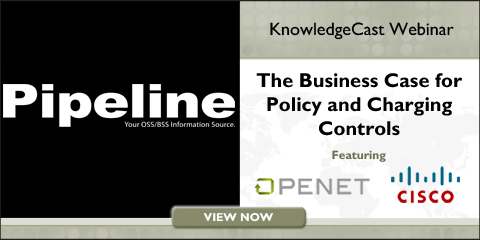|
|

Infrastructure Build Out
Building infrastructure is costly and takes significant planning and time. With decreasing revenue, operators cannot sustainably throw bandwidth in the face of what appears to be insatiable demand. LTE adoption, though promising in the long term, is likely to proceed at a slow pace, and stands to cause various technical issues, such as roaming challenges, as various operators introduce the service within different spectrum.
Offloading Traffic to Other Networks
Offloading will ultimately be a strong solution, but in the short term introduces myriad challenges. Subscribers will not likely remain sanguine as billing systems that cannot distinguish between offloaded and on-network usage charge the same for both. A similar problem exists for fair usage schemes as offloaded data accrues against a subscriber’s monthly threshold. Perhaps most difficult is the technical challenges of offloading data in the first place, as devices are not yet designed to seamlessly move between networks.
|
|
“Blindly” capping users can compromise the experience of the most profitable subscribers on the network. |
|


and improve control over the integrity of the policy catalogue.
There are several different uses and applications of policies that are designed to relieve network congestion. An example includes:
Dynamic Traffic Prioritization
Operators cannot simply enforce rigid or strict policies without regard for the nature of the subscriber or network conditions. “Blindly” capping or throttling users through global fair usage policies can compromise the experience of the most profitable subscribers on the network, increasing risk of losing them to churn. It is paramount that operators understand that resource constraints will occur in the network at certain times, and planners and architects must take proactive actions that consider the context of the subscriber’s activities, and the value of the customer before action is taken.
|
|
|
|
|

Intelligent Network Policies
Next-generation policy management enables operators to intelligently control subscriber entitlement to network resources with real-time, dynamic policies. These controls are based upon session- and subscriber-aware policy rules (e.g., network resources available, device type, location information, etc.). These policies are centrally managed in a convergent manner across multiple access networks. As networks become more complex, a centralized policy management framework can reduce the administrative overhead of managing hundreds of policies
|
|

Service providers must understand the nature of congestion during periods of high use and prioritize traffic based on pre-set parameters, such as: subscriber profile (e.g., usage history; customer type–consumer, business, or government; preferences; SLAs); account plan (e.g., tiered service plan, contract terms conditions, premium service options); and, application type (e.g., music downloads, streaming video, HTTP, VoIP and P2P, just to name a few).
|
|
|






